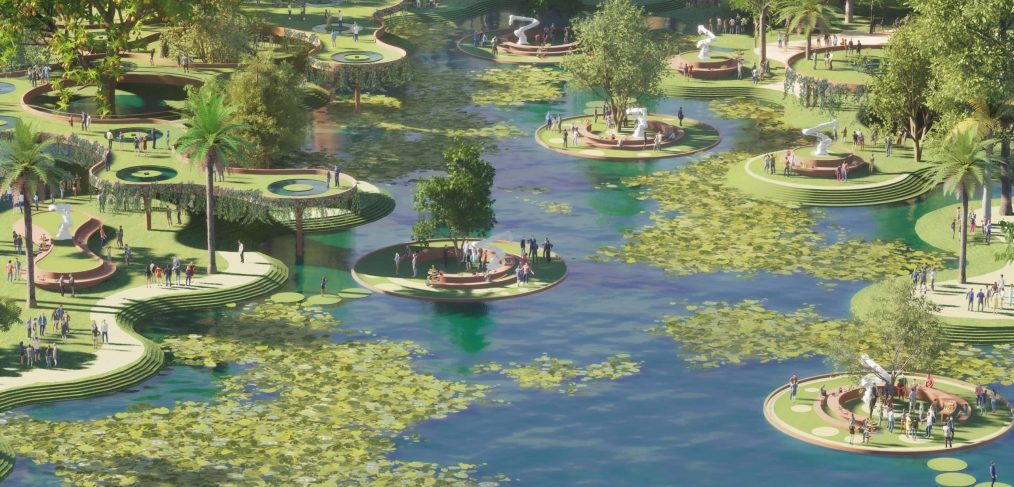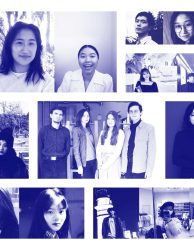
New Shenzhen: The Re-Imagination of Urban Canteen
Team
Name: Veldesen Yaputra
Nationality: Indonesia
Institution / Company: Tsinghua University Academy of Art and Design
Instagram: velarchitecture
Facebook: Veldesen Yaputra
LinkedIn: Veldesen Yaputra
Name: Wenli Wei
Nationality: China
Institution / Company: Tsinghua University Academy of Art and Design
Instagram: wenli_wei01
Name: Ke Tang
Nationality: China
Institution / Company: Tsinghua University Academy of Art and Design
Instagram: ke_tang804
-HONOURABLE MENTION of Community 2050 Competition | Category: Open
“Food is the God of the people,” according to an old Chinese proverb, demonstrates the importance of food in life; therefore, the kitchen and dining room have also become an essential space in the house.
As the population grows and the socioeconomic strata of modern and current society flatten, the functions and forms of the kitchen progressively diversify and open up, and it becomes a place for people to dine, converse, and engage in other public activities. In China, this big socialist family, canteens are everywhere. For example, most colleges and universities have numerous canteens that provide meals and a collaborative space for students during their study period. The canteen offers an extensive type of food with affordable and stable prices. In addition, most office workers in Asian countries have started to remove their need to cook at home due to the access to the canteen provided by companies for their convenience.
Shenzhen is now a model of China’s technological and economic progress and the originator of the 996 working hour system culture, a style of living that works long hours and mainly relies on takeout fast food. This not only harms people’s health, but it also harms public safety due to rubbish pollution and traffic congestion. New Shenzhen is the vision of Shenzhen’s future in 2050. On this basis, we define the future community, which expands the original family dining room into an urban canteen.
Re-Imagination Urban Canteen responds to the lifestyle and urban environment, aiming to make the entire eating process more efficient, ecologically friendly, and healthful by using modern technology for the 996 employees. The procedure can include ordering, food raw material transportation, meal preparation, dining, rubbish disposal, and other linkages. Furthermore, the site encourages people to use food waste for DIY production, provides a space for communication, and boosts the site’s vitality by turning it into a public space where people can cook, eat, communicate, rest, and engage in activities, redefining the functional connotation and formal extension of “canteen.”
Office workers can order food through the APP on their mobile phones before the break in the urban canteen. Next, the ingredients factory receives the order response and prepares the ingredients. The ingredient will be transported to the kitchen by a delivery robot, where the robotic arms can put ingredients into an automatic cooking machine for cooking. After picking up the meal, people can choose anywhere he wants to eat, with or without friends. The waste will be processed into tasteless and clean substances through a unified crushing and drying machine, which will keep the kitchen clean and healthy. This process is efficient and dramatically increases individual freedom of choice. In addition to eating, people can also take a walk and chat, becoming a way of relaxation between work.
All of these processes and functions are accomplished through the design of the site space. Depending on the local climate and natural conditions, the whole site combines two different circles, implying the typical terraced fields in southern China. Local lifting ensures straightforward and efficient use of various functional spaces and organizes and groups the spatial distribution of people, thus maintaining appropriate social distance. It also provides the site with more shading, a more comfortable microclimate, and a more diverse sight and spatial experience line. Original trees in the area are retained, and the water form is adjusted along with the arc to play a better environmental and aesthetic function. It is closely connected with the park’s nature to ensure that future community construction will not affect the area’s flora, fauna, and water environment. Inspired by the United Nations Sustainable Development Goals, the standard promotes a greater understanding of biodiversity in urban environments.
The challenge of this piece is more of a usable concept. The design aims to provide more possibilities for future working people in the Shenzhen community and create a future working lifestyle, balancing between work, body and mind, and the environment.
#shenzhen #urban #kitchen #urbancanteen #designforfuture












